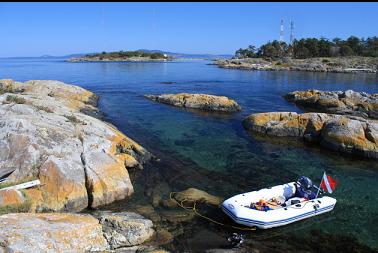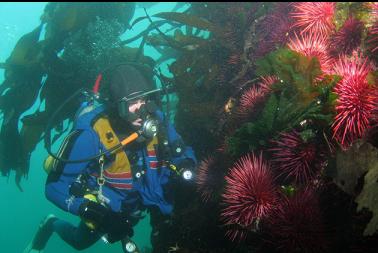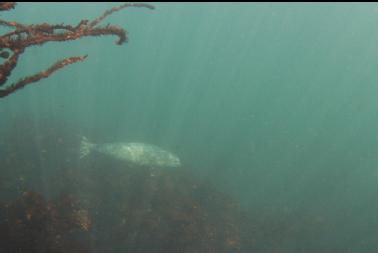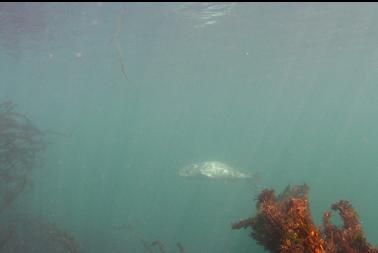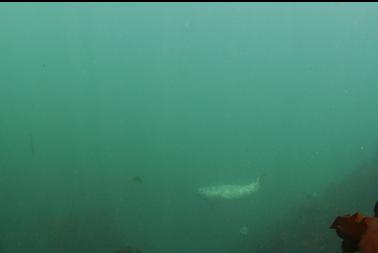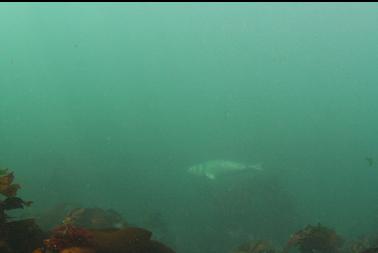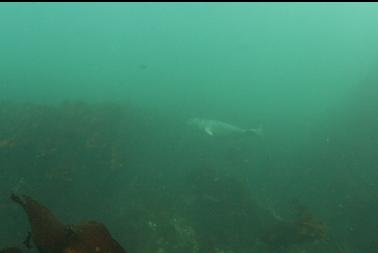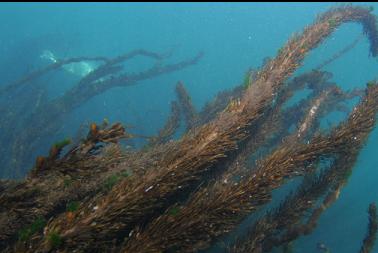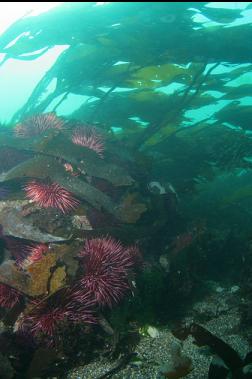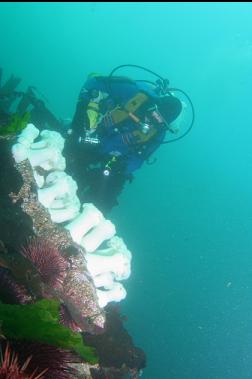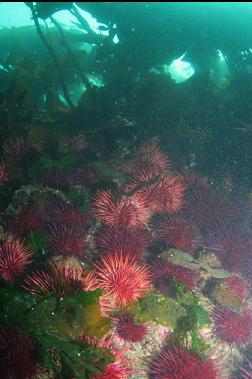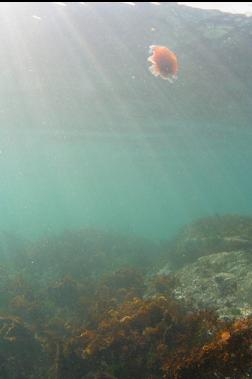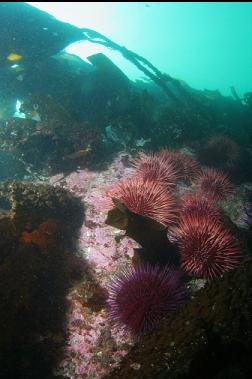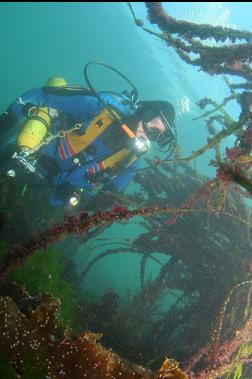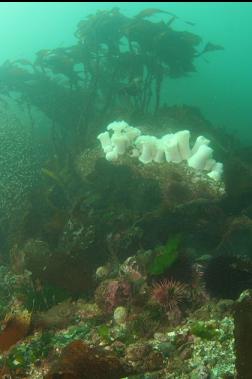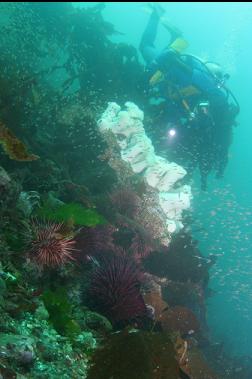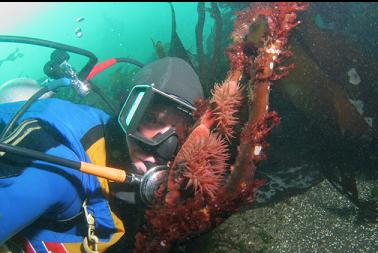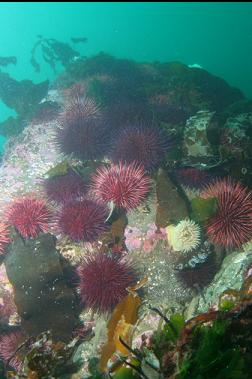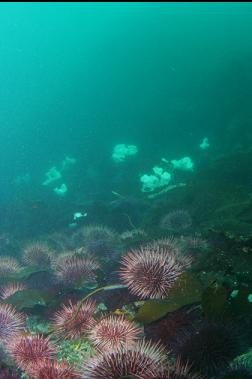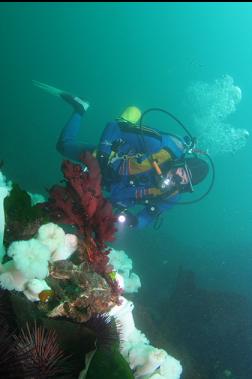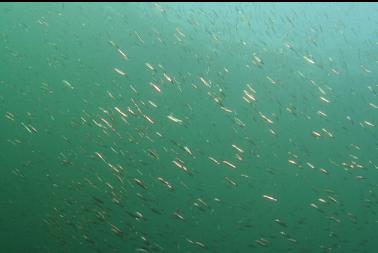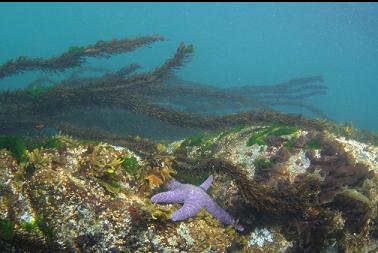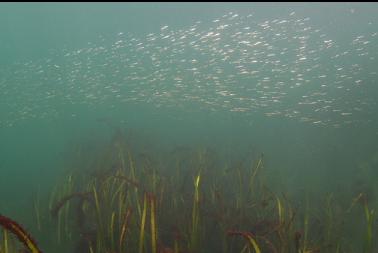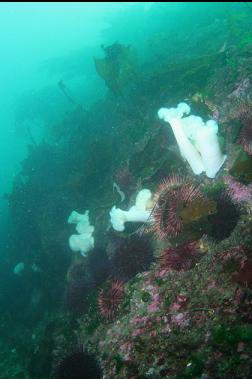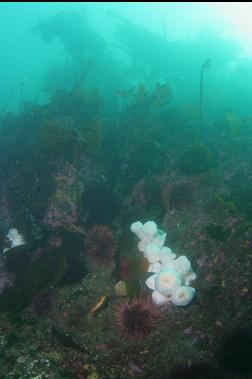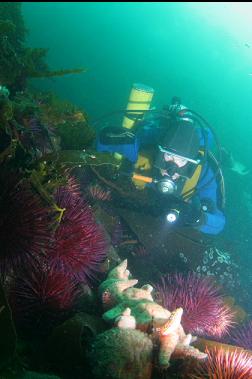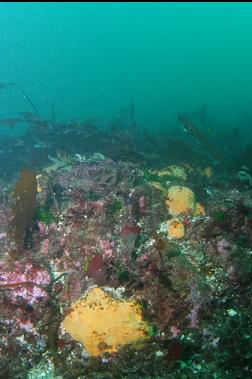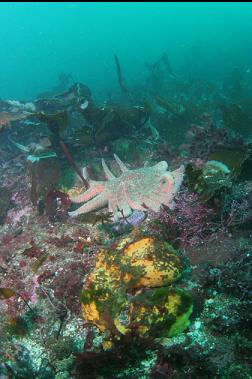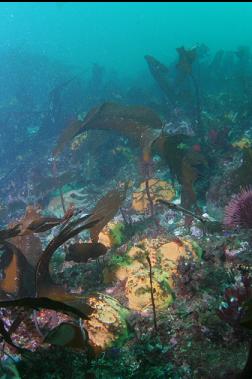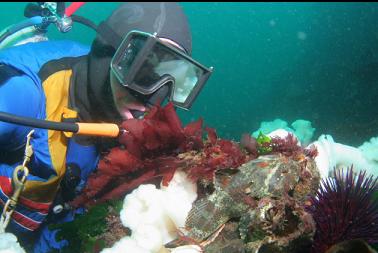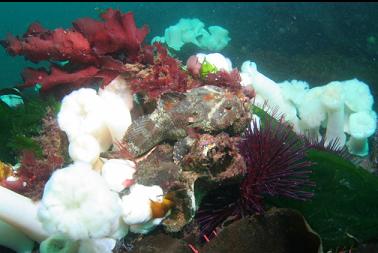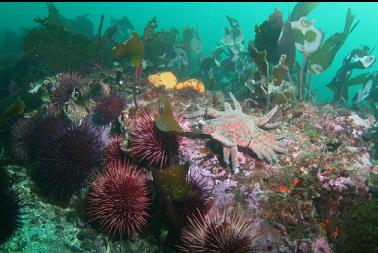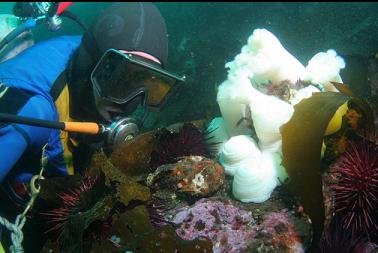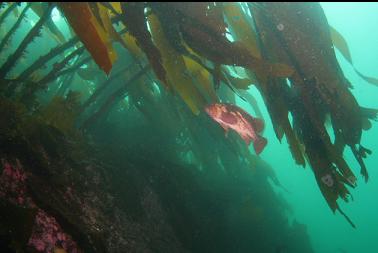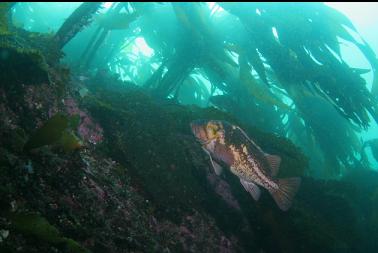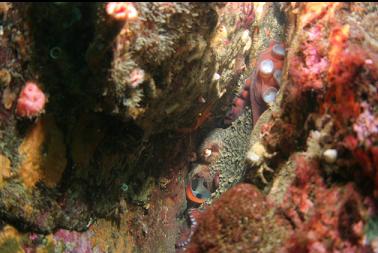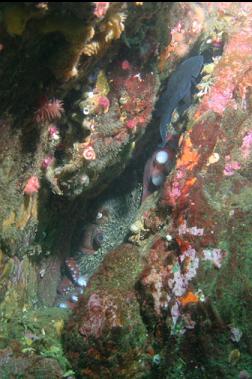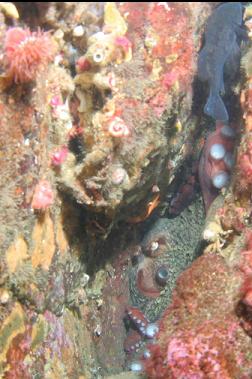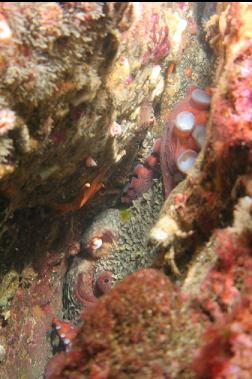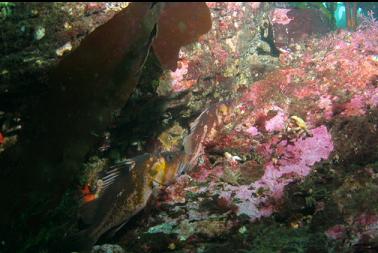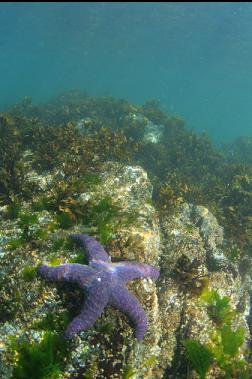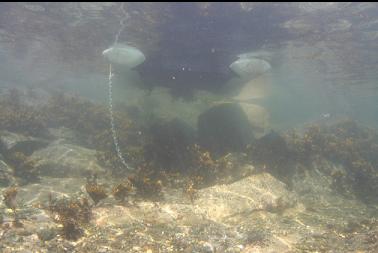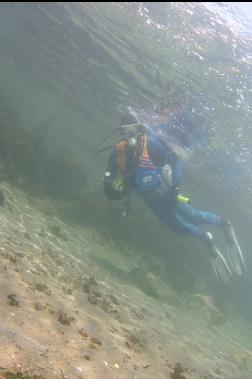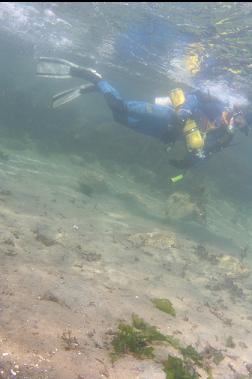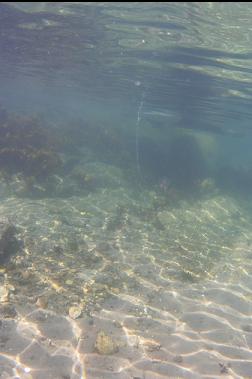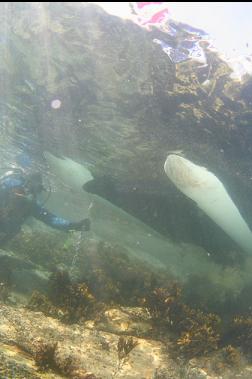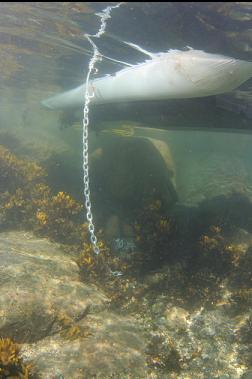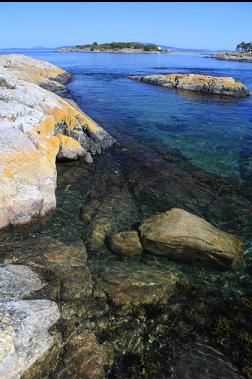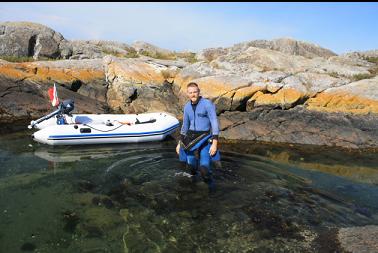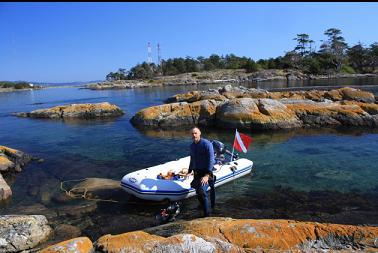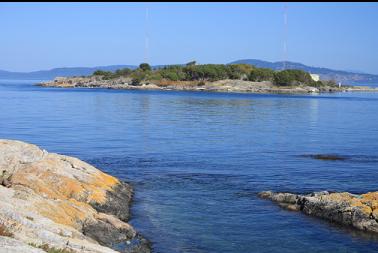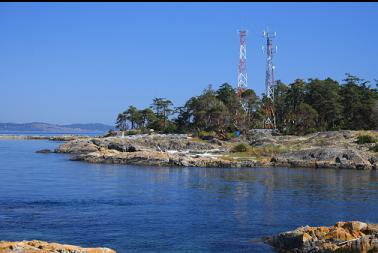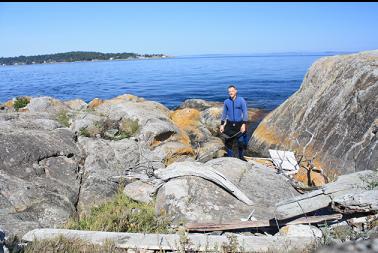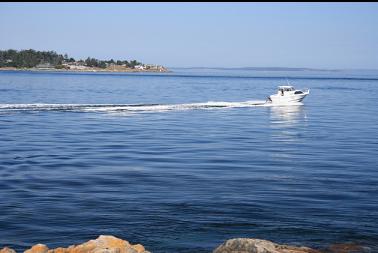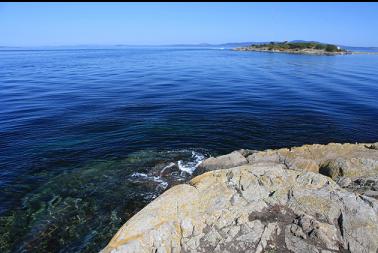Channel Point is the Western-most tip of the Chatham/Discovery Island group. The "point" is a group of small rocks and islets sticking out into Baynes Channel. I had recently done some excellent dives at nearby Strongtide Island and was hoping to see similar marine life here. These rocks are less than 500 meters from Strongtide Island (about 750 meters from the area on Strongtide that I was diving) and they are in the same body of water (Baynes Channel). They're also both exposed to the same flow of current (up to 6 knots). I came here (Channel Point) on Sept. 13, 2009. I anchored on the shallow, sheltered East side of the Northern-most rock. I showed up about an hour before the official Baynes Channel slack and the current was still obviously flowing past the outside of the rocks. I waited until about 1/2 hour before slack and swam out between the rocks into Baynes Channel. I descended down a slope of coarse sand and broken shells with a finger of a reef sticking out on my left and scattered boulders and smaller reefs on the sand around me. Visibility was about 30 feet and there were schools of herring above me. The current was still strong (too strong to swim against in places). I had to drag myself across the sand to find sheltered spots between the urchin covered reefs so I could catch my breath and relax for a few moments. The reefs were topped with stalked and feather-boa kelp. There was hardly any bull kelp. Instead of the surf-grass that you see in the shallows in the Strait of Juan de Fuca, here there was rockweed, which is common in more protected waters. I made it down to about 30 feet deep, where the current was flowing straight out down the slope. My brain kicked in and I clawed my way back up across the sand towards the shelter between the shallower reefs. A few seals swam past occasionally, staying about 20 feet away, but trying to show off how the current wasn't bothering them. I made it back to the eel-grass bed by my entry-point and decided that the current wasn't worth fighting, considering the limited marine life. This seems like yet another place in the Chatham/Discovery group that is battered by current and yet you wouldn't know it from the invertebrate life. Here, I saw mostly just urchins and a few plumose anemones. I surfaced in the protected shallows and looked back into the channel. the flow of current seemed to have stopped. I couldn't see the slightest swirl and I still had 2/3 of my air left so I swam out for another try. As I swam down the slope again, I couldn't feel the slightest bit of current. This was less than 5 minutes after I was struggling against 1-2 knots and it seemed to have suddenly stopped dead. I swam down deeper (about 40 feet), but there was still just the slope of sand with a few small reefs (urchins and some plumose). I swam to the North towards Chatham Island and a larger reef sloped down in the distance. Around the base of this reef there were clusters of plumose anemones, urchins and a few buffalo sculpins. A cormorant-type bird swam past about 20 feet away (too far for reasonable pictures). This reef went down to about 50 feet deep. On the far side of it's tip there seemed to be more current-type life. I saw several clumps of yellow sulphur sponge around the low, rocky reef and broken- rock bottom. There was still nowhere near the amount of life that I saw at Strongtide Island. I started to feel the current picking up again so I swam back up the big reef. There was a crack running up it with an octopus, a sailfin sculpin, a painted greenling and a few copper and black rockfish hiding in it.
Overall, it was interesting to see what was here, but, I probably won't visit again. If I'm going to go to the trouble of taking a boat somewhere and fighting a strong current, I expect the marine life to make it worth my while. To be honest, I've seen more life at most of the local shore dives. Sorry, Channel Point.


